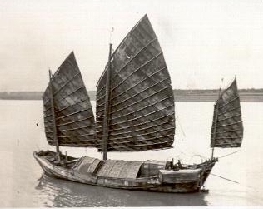
 |
|
Japan had already been cultivating oysters on a grand scale many decades before the French started in the latter part of the 19th century. The Japanese entered the 20th century as old masters in oyster cultivation. In the 1920s, Japan started exporting huge quantities of "oyster babies" to oystermen in Washington State, a profitable business relationship which would last clear into the early 1980s. The success of the oyster industry along the West Coast of the United  States
and Canada in the 20th century can be traced back directly to
vast shipments of young oysters from Japan over the course of
about 60 years. States
and Canada in the 20th century can be traced back directly to
vast shipments of young oysters from Japan over the course of
about 60 years.Japanese oystermen were not only very good at producing "oyster babies" for struggling U.S. West Coast oystermen, they also produced enormous quantities of oyster meat, ultimately challenging U.S. East Coast oyster growers in the 1930s on international and domestic markets. Japan continued to broaden its lead by also cultivating pearl oysters, soon becoming the principal supplier of cultured pearls in the world. An ingenious and most industrious man by the name of Kokichi Mikimoto started to become well known internationally for his fine cultured pearls. World War 2 brought a dark cloud upon the Japanese oyster industry, as its production became destined for Japan's huge military machinery. Its established international markets vaporized. Shipments of oyster babies to the growers in the U.S. Pacific Nothwest ceased during the war years. Luckily for the U.S. oystermen on the West Coast, unusually favorable climatic conditions prompted the Pacific oyster to reproduce splendidly in Washington State waters during the war years, allowing Washington State oyster production to remain high. On September 2., 1945, Japan formally surrendered. War torn Japan rapidly recovered and oyster baby shipments to the U.S. Pacific Northwest resumed. By 1947, Japan was shipping more Pacific oyster babies to the U.S. West Coast than ever before.
|
|||||||||||||
|---|---|---|---|---|---|---|---|---|---|---|---|---|---|---|